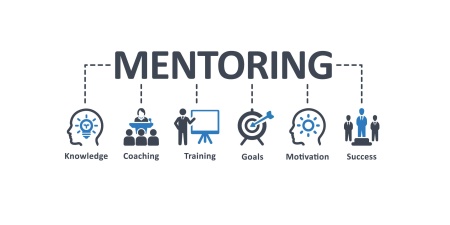When Steve Guglielmo advised that this was Welding and Gases Today’s anniversary edition, I was excited. As it happens, the magazine’s landmark issue coincides with an anniversary of my own. I started my career in the gases and welding business 50 years ago on June 1, 1972.
From Floppy Disk to the Cloud
My long and fulfilling career has been punctuated by the digital changes that have transformed society. I still have my first calling card that bears the title, “Sales Engineer, North Texas, Airco Welding Products.” In that position, I called on distributors. As part of my training, I spent a couple weeks in Airco’s customer service department in Houston. While there, I was able to solve a problem the company was having with a computer routine on its IBM System/370. Having taken courses in programming Fortran for engineering applications just a year earlier, I was able to fix the problem. The punch-card solution worked like a charm; I was viewed as a computer marvel. This was my introduction to the world of digital business.
Airco became BOC in 1978 and, by then, I had been promoted to Assistant Regional Sales Manager for Texas, Oklahoma, and New Mexico. I was asked to participate in the negotiations for the purchase of an IBM minicomputer for one of our distributors in Oklahoma City. During that transaction I learned about IBM’s sales cycle, which was called “Enterprise Selling.” It involved getting the company’s CEO, as well as its key managers, administrators, and sales reps, to agree to the purchase. I served as BOC’s representative in the transaction.
My first computer was an Apple III on which I saved documents on a floppy disk. This piece of technology was left behind in 1984 when I ended my days with BOC and joined a welding and gases distributor, General Air. There, we used a series of Macintosh computers and became connected to the world-wide-web in the ‘90s. I can still hear the squealing buzz of the dial-up internet connection that linked General Air’s first computer network to the outside world.
The rush to establish an online presence followed. We developed websites with a collection of our products and services and began to use email. As broadband and Wi-Fi replaced dial up connections, digital communications went into high gear. Now, our phones are a thousand times more powerful than our first clunky computers and storage is in the Cloud.
Digital Transformation
Today, we live in a digital world where eCommerce, Enterprise Resource Planning (ERP), and Artificial Intelligence (AI) platforms have transformed the way we do business. These applications are all significant game changers. For example, eCommerce is altering the revenue stream — rising by 44% over the past three years.
These changes represent progress. The implementation of digital technology has improved efficiency, value, and overall innovative effectiveness. Data driven capabilities for people, products, processes, and technology have accelerated business results.
Distributors are now up against a mountain of online competition and must employ eCommerce, integrated ERP software, and B2B distributor-customer platforms. Distributors also need to focus on product content that sells, and marketing capabilities that help them capture their digital revenue market share.
Distributor Sales Strategies: A Brief History
Distribution sales, as we know it today, got its start in the United States in the late 19th and early 20th century, when the mass production of goods produced the need for a network of distribution centers across the country. Wholesalers began to warehouse inventory for local distribution.
When I started my career in the ‘70s, outside sales had a focus on transactional, professional sales cycles. As a sales manager, I was sent to a training program developed by IBM titled “Practice of Professional Selling.” Its main premise was to present product features and benefits. Unfortunately, this approach to selling lacked focus on customer needs and purchasing agents learned to avoid salespeople.
In the ‘90s, to offset this imbalance, sales strategy shifted to developing strong relationships of trust with customers. Selling became more about building meaningful partnerships.
Next, transactional sales techniques were advanced. The term “solution selling” became popular, as distributors put forward productivity enhancement options for their customers. Companies introduced plans like Lincoln Electric’s “Guaranteed Cost Reduction Program.”
Solution selling gave way to a broader concept, consultative selling. This focused on customer needs and experience rather than selling them on product or service. The salesperson learned to ask questions that flushed out solutions that met customer concerns.
With the digital transformation we enter yet another era of building key stakeholder relationships and the buzz words are Enterprise Selling. The enterprise sales strategy was first used to sell large, sophisticated purchases as noted in the IBM example above. Its best practices have evolved over time and today’s top salespeople have taken Enterprise Selling one step further — using it to act in a business advisory capacity with clients.
Distributors need to incorporate Enterprise Selling to compete in the digital marketplace. A survey conducted in 2021 by the Distribution Strategy Group revealed that in the next five years, without a radical change in sales methodology, traditional distribution will lose 14% of their revenues: 7% from suppliers selling directly to the customer, and 7% through other online channels (Distribution Strategy Group, “The Challenger Sales, Taking Control of the Customer Conversation,” February 23, 2021).
Personalization
Enterprise selling is the business of capturing sales in a fast-paced digital economy. It requires renewed effort as digitization has completley altered the way people sell.
The outside sales process, in particular, has undergone significant change. Larry Davis of AgoNow explained in a recent Modern Distribution Management podcast (“Collaboration Will Define Competitive Advantage,” Feb. 3, 2022), “The outside salesperson is no longer the quarterback, once personally handling order taking, stock checking, chasing backorders, and pricing errors. Now, these tasks can all be done electronically. Today’s salesperson needs to act more like a scout, adjusting a way of creating relationships with customers. They can share insights from suppliers, technology integrators, consultants, and other information providers.”
Both outside and inside distributor sales processes must incorporate working with their customer’s CEOs, adminstration, operations, and sales/marketing executives to understand their business objectives. The term for this procedure is personalization, “the act of tailoring an experience or communication based on information a distributor has learned about their customer.” (www.salesforce.com/resources/articles/personalization-definition). The goal is to educate and train customers on new added-value propositions related to eCommerce, vendor managed inventory, and to offer internal and external expertise using your employees and vendors.
To illustrate this potential, Fastenal just reported, “sales through its digital footprint comprised 47.0% of total 1Q sales, up from 46.4% in 4Q 2021; 39.1% in 1Q 2022 and 34.9% in 1Q 2020. That’s a jump of 12.1 percentage points in just two years, and the company said its goal is to hit 55% within 2022, which would be yet another hefty increase over the next nine months.” Fastenal’s first quarter total revenue was $1.7 billion, up 24.6% for the same quarter in 2020! (Modern Distribution Management, “Fastenal Wants Digital to Comprise 55% of its Sales by End of 2022,” April 15, blog). Fastenal CFO, Holden Lewis, said, “We spend more on getting closer to our customers than our peers do. We invest more in the tools that allow us to move product where the customer needs it.”
The Integrated Sales Team
The digital transformation is rapidly creating new integrated sales roles. In its webinar (“Distributors’ Digital Revolution,” February 2, 2022), Distribution Strategy Group described these changing sales roles. Field sales roles will include providing product demos, samples, strategic relationships, account penetration, events, product training, and referrals. Distributors will be expanding their inside sales efforts to include providing account continuity, product penetration, competitive intelligence, contact names and data capture, CRM maintenance, and tactical and operational relationships. The customer service role will expand to include order management, customer invoicing and accounting, service delivery support, and AI assisted cross-selling. Finally, there will be a new digital focus on product an service promotions, related product recommendations, product specifications, data gathering, and thought leadership content and positioning.
Creating New Space
This evolving integration will also have an impact on the distributor’s retail space. Large players, like The Home Depot, Lowe’s, and Costco, have demonstrated the value of displaying products in an open warehouse format. Regional distributors will begin to turn their stores into more warehouse-like spaces, removing the stores internal walls and bringing the inventory out of the warehouse into the store. The concept will become, “come and stay as long as you can.” The back of the store will have small rooms with desks and access to the internet where customers can come with their laptops to work on projects without the interruptions in their company offices. Free coffee and soft drinks will be available. Stores will offer product training and demos, products specialists, repair drop offs, simplified product returns, and weekly vendor mini-open houses.
Celebrating Change
In my 50 years in the gases and welding industry, I have been fascinated by the pace of change and how business has adapted to it.
A SWOT Analysis (Strength, Weakness, Opportunity, and Threats) of the conventional distributor’s current sales relationship to its customer base reveals what needs to be done to keep pace with today’s digital transformation.
The strength a distributor has in customer relations is its easy access to communication, local inventory, same day service, and technological expertise. The threat of sales lost to virtual, alternative channels, however, remains real. Yet the average distributor’s weakness is a lack of a proactive approach to eCommerce. The opportunity distributors have is to learn how to incorporate the Enterprise Selling process to offset that weakness.
Albert Einstein said that the measure of intelligence is the ability to change. Be smart – make sure you are adopting the sales strategies necessary to meet market demands in the digital age.








